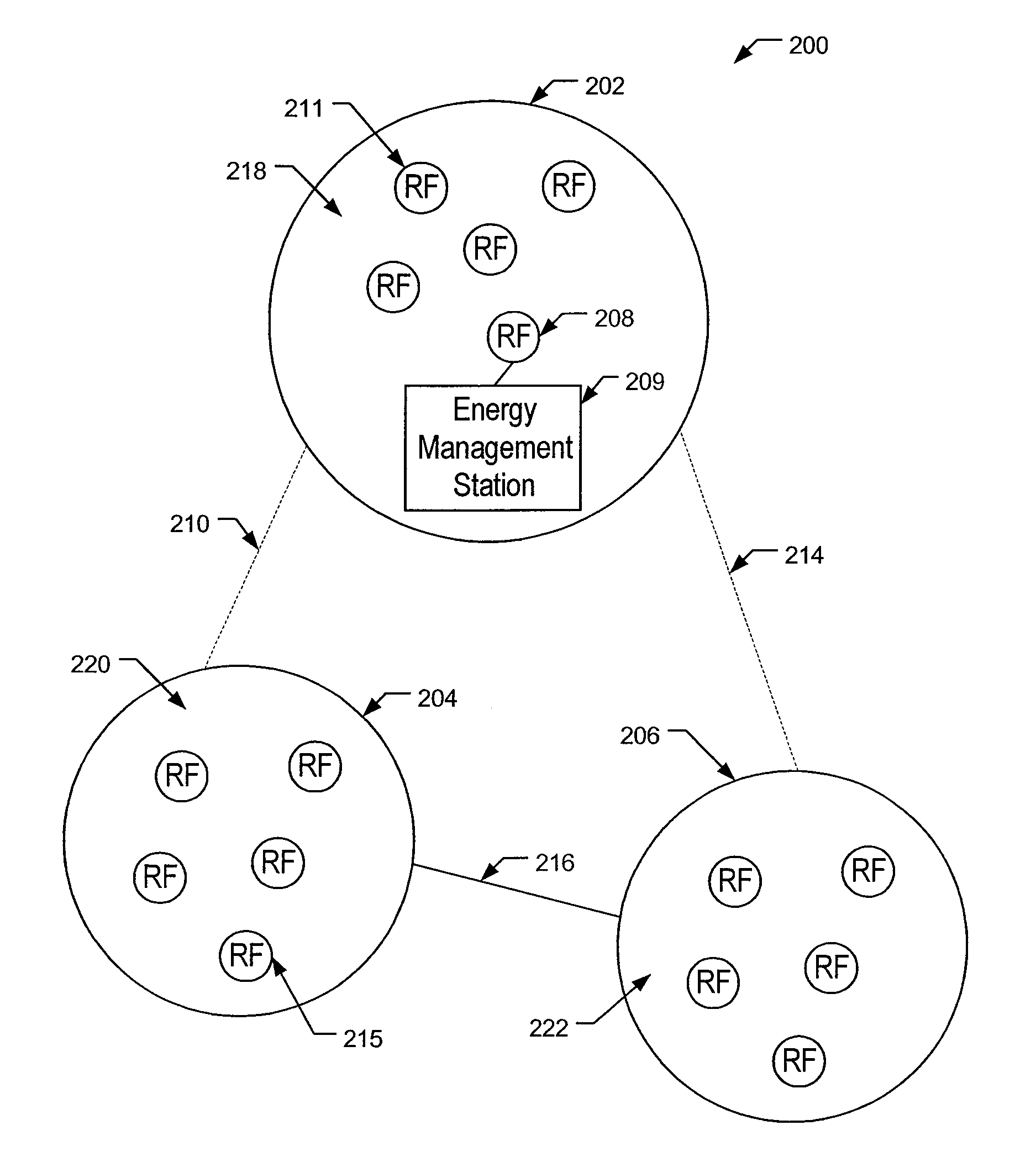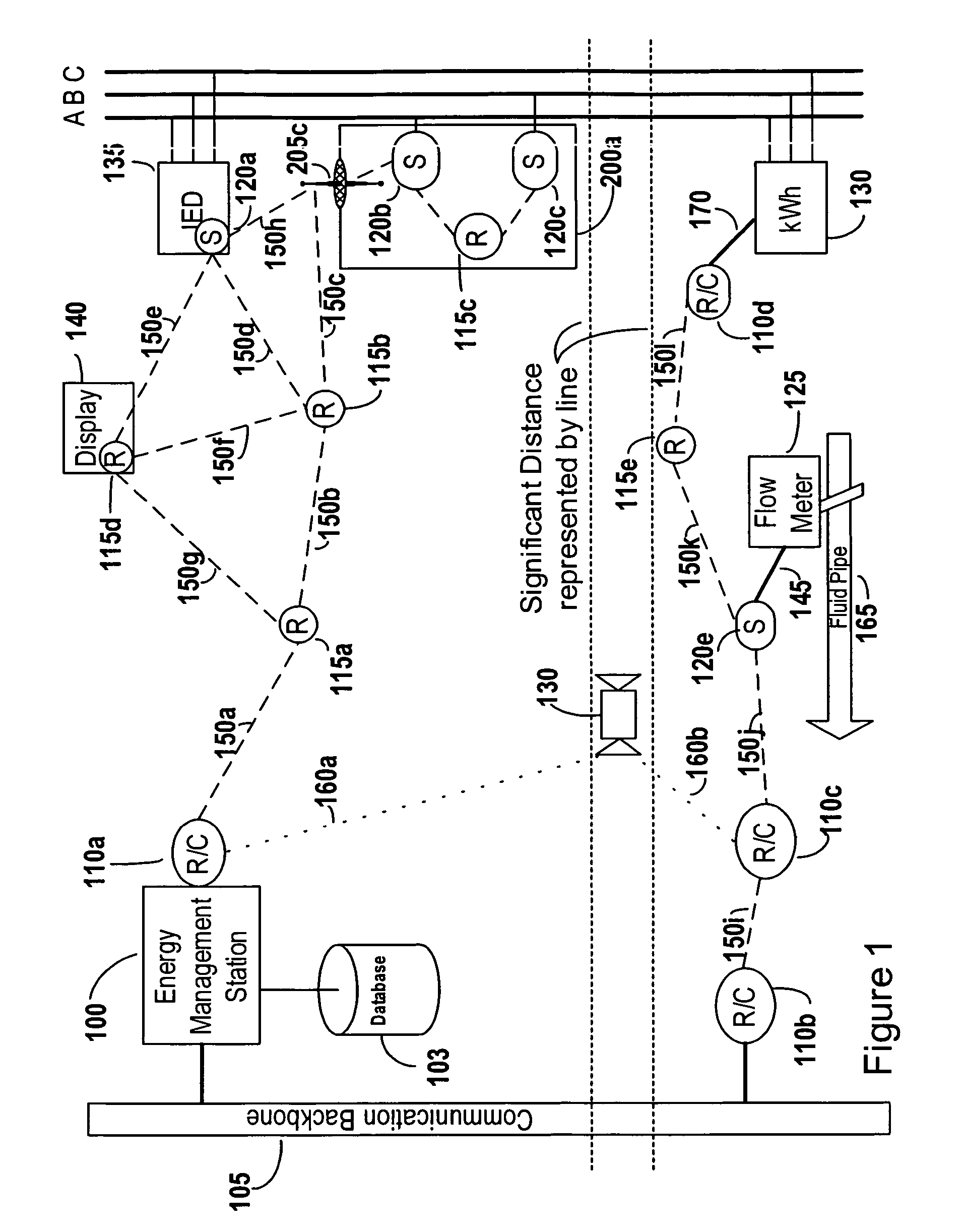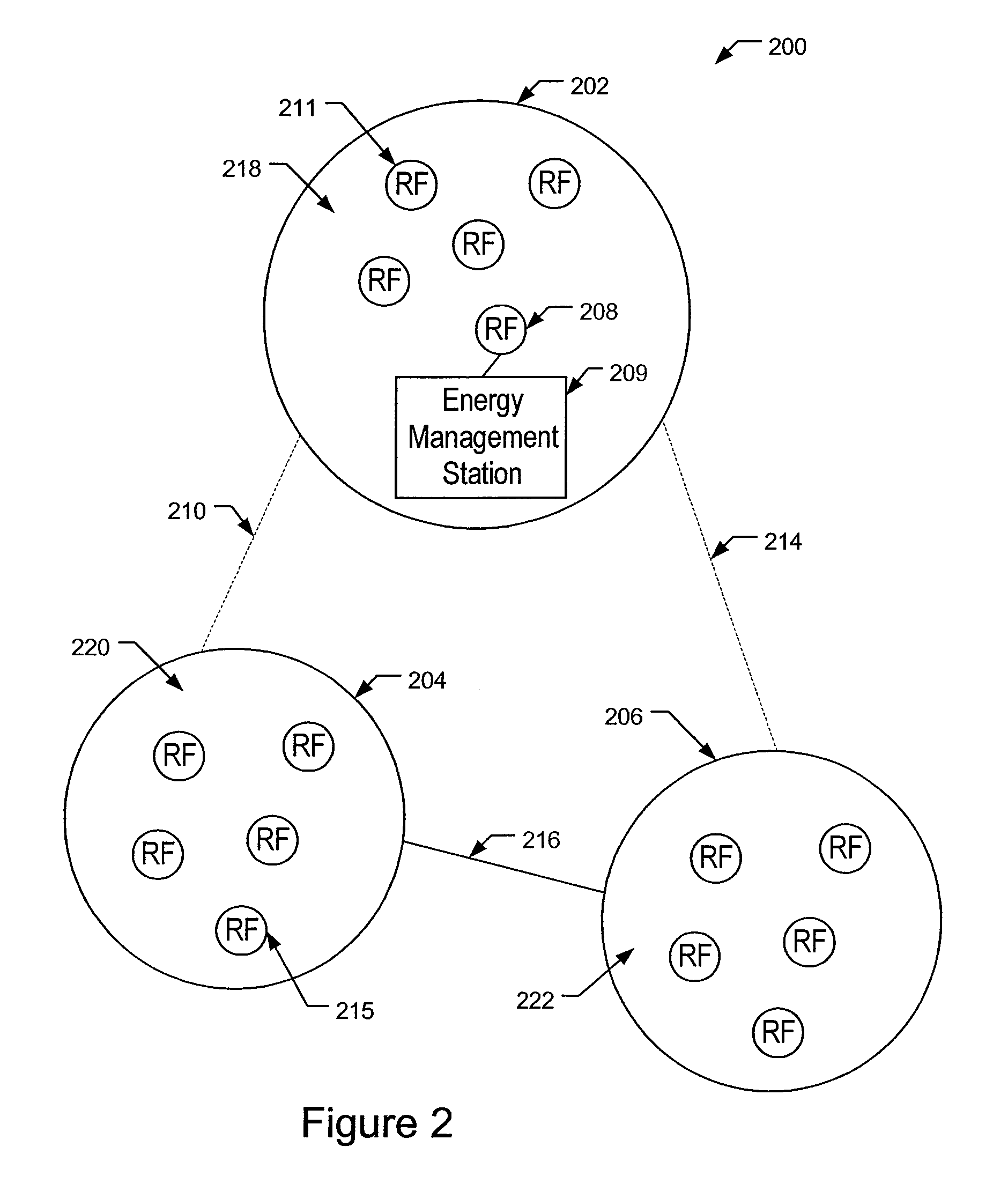Grouping mesh clusters
a technology of grouping and clustering, applied in non-electric variable control, process and machine control, instruments, etc., can solve the problems of prohibitive labor involved in running the communication wires, the availability of existing communication, and the cost of extending the communication wires, so as to reduce the number of devices or repeaters, the effect of high transmission bandwidth
- Summary
- Abstract
- Description
- Claims
- Application Information
AI Technical Summary
Benefits of technology
Problems solved by technology
Method used
Image
Examples
Embodiment Construction
[0027]Herein, the phrase “coupled with” is defined to mean directly connected to or indirectly connected through one or more intermediate components. Such intermediate components may include hardware, communication and software-based components. Additional intermediate components may include electrical field coupled and magnetic field coupled components. The figures included in this document refer to various groups of items using a number prefix and a letter as a suffix, such as 110a, 110b, and 110c. The number listed alone without the letter suffix refers to at least one of these items. An example of this is when a group of items such as the repeater converters are referred to as repeater converters 110, this is meant to refer at least one of the repeater converters 110a, 110b, or 110c.
[0028]Embodiments of the invention relate to systems and methods for grouping mesh networks, also referred to herein as mesh clusters. In some instances, grouping mesh networks may include splitting...
PUM
 Login to View More
Login to View More Abstract
Description
Claims
Application Information
 Login to View More
Login to View More - R&D
- Intellectual Property
- Life Sciences
- Materials
- Tech Scout
- Unparalleled Data Quality
- Higher Quality Content
- 60% Fewer Hallucinations
Browse by: Latest US Patents, China's latest patents, Technical Efficacy Thesaurus, Application Domain, Technology Topic, Popular Technical Reports.
© 2025 PatSnap. All rights reserved.Legal|Privacy policy|Modern Slavery Act Transparency Statement|Sitemap|About US| Contact US: help@patsnap.com



